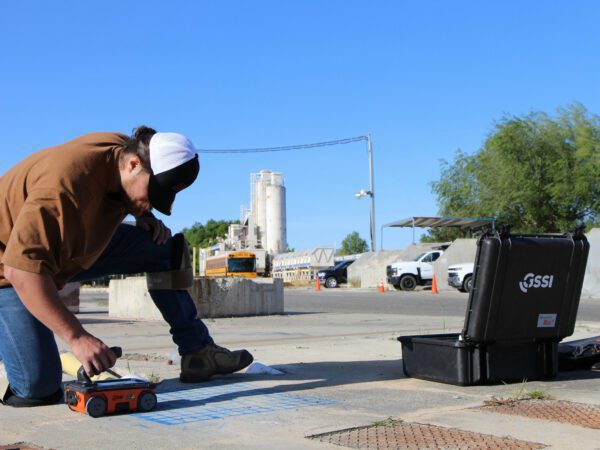Concrete Scanning: A Vital Step Towards Ensuring Architectural Stability and Security
In the realm of building and construction and facilities upkeep, the importance of concrete scanning can not be overemphasized. By employing innovative technology and methods, concrete scanning serves as an essential device in guaranteeing that the honesty and safety of bridges and buildings are supported to the highest possible standards.
Value of Concrete Scanning
Concrete scanning plays an essential function in making certain the structural stability and safety and security of buildings and facilities tasks. By utilizing advanced innovations such as ground-penetrating radar (GPR) and electro-magnetic induction, specialists can non-destructively examine concrete frameworks to identify potential problems, spaces, ingrained things, and support format. This process enables early detection of abnormalities that can endanger the security of a framework, preventing costly damages and making sure the security of owners.
Before exploration, cutting, or coring into concrete, scanning aids determine the precise areas of rebar, post-tension cords, and other ingrained aspects, reducing the threat of unintentional hits that could lead to architectural weaknesses. In addition, concrete scanning aids in top quality control by confirming the density of concrete covers and finding any disparities that may influence the overall longevity of the structure.
Innovation for Concrete Examination

Advantages of Very Early Discovery
Prompt discovery of architectural problems can dramatically minimize threats and make certain the long life of building and construction tasks. By recognizing possible issues early in the building and construction procedure, stakeholders can take positive steps to deal with issues before they rise right into bigger and much more costly problems. Among the vital advantages of early detection is the avoidance of architectural failures, which can pose serious safety and security threats and cause job delays and economic losses.
Additionally, early detection permits timely repair work and upkeep, which can assist extend the life-span of the framework. By dealing with concerns without delay, construction groups can stay clear of expensive repairs or also the need for premature replacement of architectural components. This proactive strategy not just saves time and cash however also improves the overall safety and security and toughness of the building task.
Furthermore, very early detection can boost job preparation and decision-making by offering stakeholders with valuable insights right into the condition of the framework. Armed with this info, project managers can make enlightened options see post pertaining to construction materials, techniques, and timelines, causing more successful and effective task outcomes.
Guaranteeing Architectural Security
Guaranteeing the architectural security of a construction project is vital to its safety and security and longevity. Structural stability describes the capacity of a structure or infrastructure to maintain its form and function under different tons and ecological problems. To achieve this, extensive analysis and surveillance of the structure are vital. Concrete scanning plays a critical duty in ensuring structural stability by detecting prospective problems such as voids, delamination, or support corrosion that could compromise the integrity of the framework over time.
By making use of innovative scanning innovations like ground-penetrating radar (GPR) and electromagnetic induction, construction professionals can non-invasively evaluate concrete frameworks to determine areas of problem underneath the surface. This proactive strategy enables the early discovery of weak points or flaws, allowing punctual repair services or reinforcement to stop architectural failures.
Normal concrete scanning during various building phases and throughout the life process of a structure can aid preserve its security, reduce threats, and make sure the safety and security of residents. By prioritizing structural security with concrete scanning, construction jobs can enhance their durability and resilience, inevitably adding to better safety and durability.
Preventing Vital Failings
To protect versus devastating occasions, thorough surveillance and positive maintenance are critical in averting critical failings within structural frameworks. Identifying potential problems prior to they escalate is essential to protecting against structural failures. Carrying out regular inspections, such as concrete scanning, can expose surprise defects like voids, fractures, or deterioration that can compromise the stability of a structure. By using innovative scanning technologies like Ground Penetrating Radar (GPR) or Concrete X-ray, engineers can non-destructively examine the problem of concrete and identify weak points that need support or fixing - RainierGPR Service Areas.

Conclusion
Finally, concrete scanning plays a crucial role in guaranteeing structural integrity and safety and security by making use of innovative modern technology for very early discovery of prospective problems. This proactive approach aids protect against essential failings and guarantees the stability of frameworks. It is crucial to focus on concrete evaluation as a basic practice to shield the durability and security of structures and framework.
Concrete scanning plays a vital role in ensuring the structural stability and safety of structures and facilities projects. In addition, concrete scanning aids in high quality control by confirming the density of concrete covers and detecting any inconsistencies that may go to this web-site impact the overall longevity of the structure. Concrete scanning plays a crucial function in making certain architectural stability by finding possible concerns such as voids, delamination, or reinforcement corrosion that can compromise the stability of the framework over time.

In verdict, concrete scanning plays a vital function in guaranteeing architectural integrity and safety and security by making use of innovative technology for very early discovery of prospective issues.